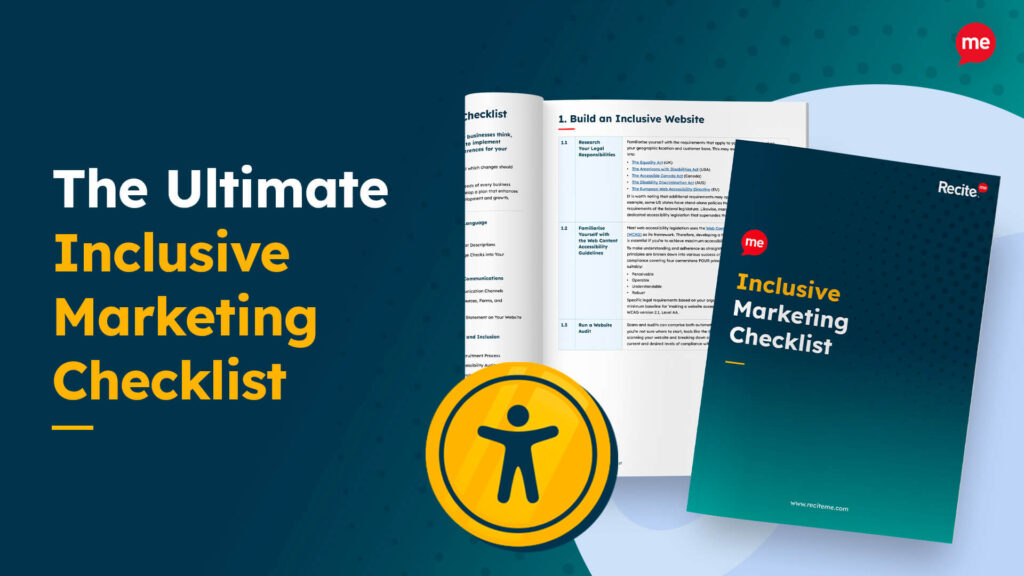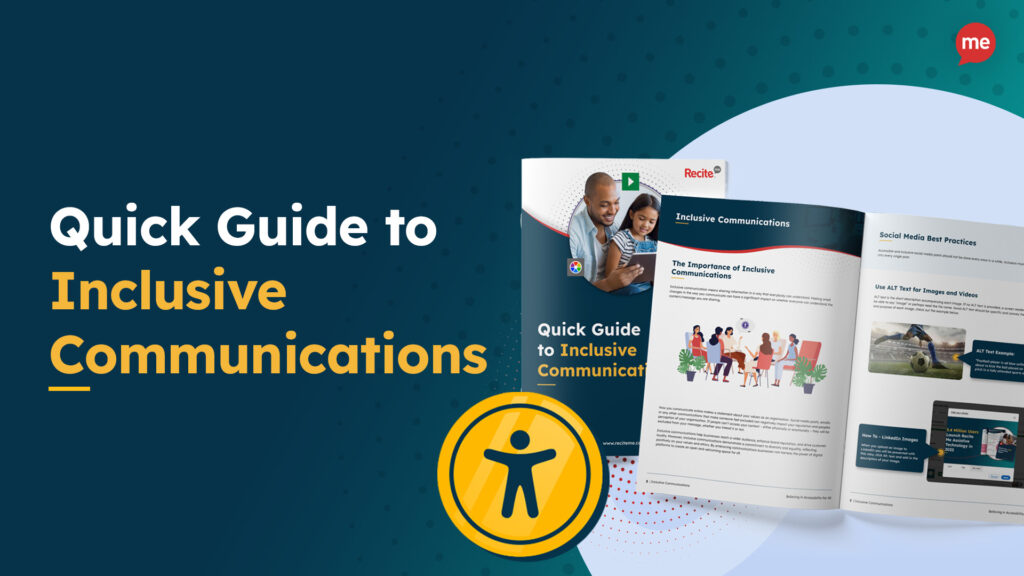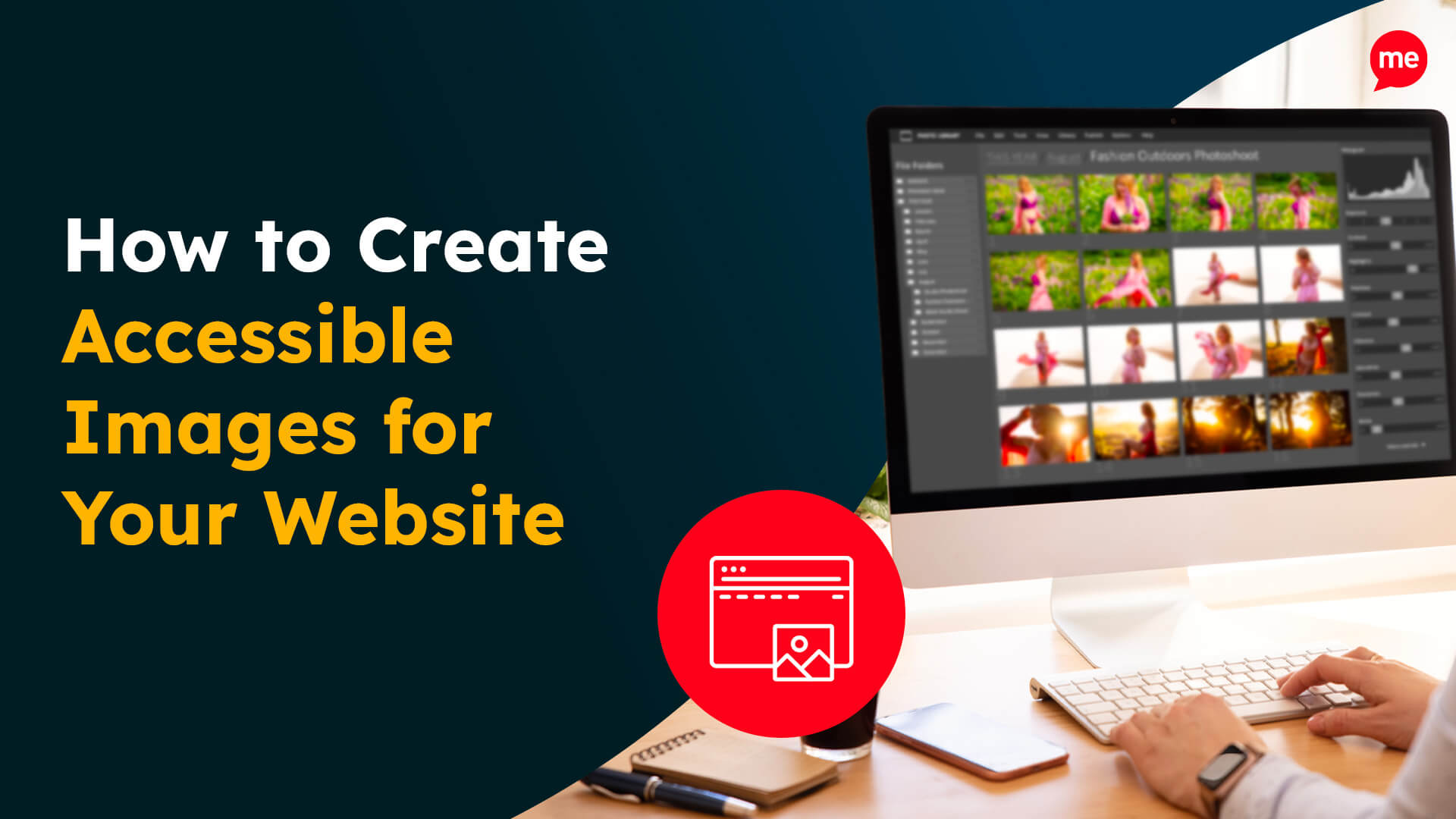Kantar recently released its 2024 Brand Inclusion Index, and the results highlight something that the team here at Recite Me has known for some time: In an increasingly diverse global community of consumers, inclusive marketing is no longer simply a buzzphrase or ‘nice to have’ goal on your diversity, equity, and inclusion (DE&I) checklist. It’s a strategic imperative.
In this quick guide, we’ll summarise the 2024 Brand Inclusion Index findings and outline some actionable steps you can follow to enhance digital inclusion across your organisation.
Brand Inclusion Index 2024: A Summary of Key Findings
The brand inclusion Index is based on a survey of over 23,000 people across 18 countries. Here’s a summary of the most critical insights.
- Consumer Influence and Expectations – 75% of consumers report that a brand’s DE&I reputation influences their purchase decisions.
- Commercial Discrimination – 46% of the global population experienced some form of discrimination in the past year, with the majority of incidents occurring in business or commercial settings.
- Impact on Emerging Markets – Discrimination is more prevalent in emerging economies (64%) than developed markets (36%), potentially hindering growth in these regions.
- Vulnerability of Underrepresented Groups – People with disabilities and LGBTQ+ individuals report the highest rates of discrimination, at 81% and 62%, respectively.
These statistics emphasise the urgent need for brands to address DE&I failures and make targeted efforts to create inclusive environments and content.
The Next Steps for Brands Looking to Improve DE&I
The Brand Inclusion Index outlined several critical workstreams for improving DE&I efforts. Here’s a summary with some examples and action points.
1. Embedding DEI in All Areas of Business
72% of discrimination incidents were reported in work environments or during brand interactions. So, brands must incorporate DEI into their core strategies, including hiring, product innovation, and communications.
2. Humanising Marketing
Brands that shift focus from treating consumers as targets to understanding their diverse needs through inclusive research can significantly enhance brand loyalty and buying intentions. For example, progressive advertising has been shown to drive a significant sales uplift of over 16%.

3. Mastering Cultural Intelligence
Brands must learn and respect the cultural identities and traditions of various communities to better connect with diverse audiences. For instance, Unilever has been praised for its efforts in understanding and celebrating cultural nuances in its marketing campaigns, fostering stronger connections with diverse consumer bases.
4. Investing in Inclusion for Growth
Mapping out the growth potential of underrepresented groups can help brands make informed marketing decisions. More specifically, recognizing the significant spending power of women, people with disabilities, and LGBTQ+ individuals could result in significant bottom-line benefits.
5. Bringing People Together
Focusing on universal values such as family, honesty, and health can unite diverse groups. For example, campaigns like Tesco’s ‘Together this Ramadan’ show how celebrating cultural traditions can foster a sense of community and inclusivity.
6. Enforcing Accountability
Tracking DEI performance against clear goals and metrics is crucial to building and maintaining consumer trust. For example, Diageo’s comprehensive approach to DEI, from recruiting diverse talent to ensuring an inclusive supply chain, exemplifies effective accountability in action.
7. Being a Brave Brand
Standing firm on DEI values and being transparent and humble when mistakes occur can help brands navigate complex cultural landscapes. Google’s consistent commitment to DE&I – despite vocal opposition in some quarters -demonstrates the long-term benefits of being a brave brand.
Where to Look for Inspiration
Google, Dove, Nike, Amazon, and McDonald’s rank as the top five inclusive brands globally:
- Google stands out as the most inclusive brand globally, praised for its DE&I policies, products, and authentic representation of diverse communities.
- Dove is commended for its consistent and positive representation of women of all backgrounds, emphasising natural beauty and body positivity.
- Nike receives recognition for its unwavering support of the LGBTQ+ community and diverse representation in its advertising and product offerings.
- Amazon is recognised for its efforts to create a diverse and inclusive workplace, support for small and minority-owned businesses, and inclusive marketing campaigns that reflect varied consumer experiences and backgrounds.
- McDonald’s is acknowledged for its initiatives to promote diversity within its workforce, support for community programs focused on underrepresented groups, and commitment to inclusive advertising showcasing various cultural backgrounds and family structures.
How Digital Inclusion Can Support Your DE&I Goals
Here are some actionable tips for changes you can make to ensure optimum digital inclusion across all aspects of your business.

How Digital Inclusion Can Support Your DE&I Goals
Here are some actionable tips for changes you can make to ensure optimum digital inclusion across all aspects of your business.
Enhance Website Accessibility
Making sure websites and other digital platforms are accessible to people with disabilities can significantly improve inclusion, as research shows that 16% of the global population has a disability that can make accessing online content challenging. Critical digital accessibility upgrades include:
- Choosing a CMS that supports accessibility.
- Ensuring 100% keyboard accessibility.
- Using tools like the Recite Me Accessibility Checker to run an audit and make updates that align with the Web Content Accessibility Guidelines (WCAG).
Publish Inclusive Content
Creating content that represents diverse groups and is available in multiple languages can help you reach a broader audience. Examples of steps you can take include:
- Using inclusive imagery to ensure each diverse group within your audience feels acknowledged, understood, and respected.
- Writing copy using simple language, short sentences and paragraphs, and positive people-first descriptions.
Utilising accessibility software like the Recite Me Toolbar to allow individuals to make customisations per their personal needs and preferences.
Make Communications Inclusive
How you communicate with potential customers and employees makes a clear statement about your values as an organisation. Top tips include:
- Utilising in-built accessibility features on social media platforms to help you reach more people by writing appropriate image alt text, using hashtags with Camel Case capitalisation, and providing closed captions, transcripts and audio descriptions for multimedia content.
- Designing a fully inclusive recruitment process that provides accessible information, forms, and application procedures for everyone.
Publishing an Accessibility Statement on your website to outline your current and future digital accessibility goals and provide alternative ways for people to contact you, should they encounter online access barriers.
Need More Help Becoming Digitally Inclusive?
The following resources are packed full of actionable tips and expert advice for making your digital content more inclusive:

Inclusive Marketing Checklist
Ensure your brands message reaches everyone by making your marketing more accessible and inclusive.

Inclusive Recruitment Checklist
This checklist breaks down everything you need to know to attract and retain diverse candidates.

Inclusive Communications Quick Guide
Download our guide to learn how you provide inclusive communications across your digital channels.



